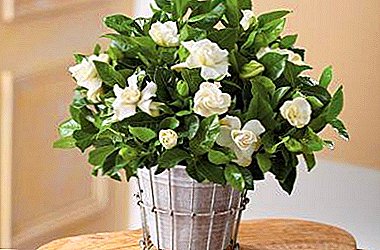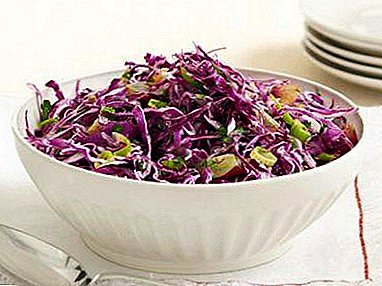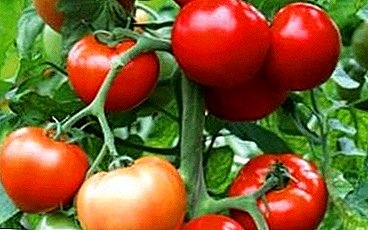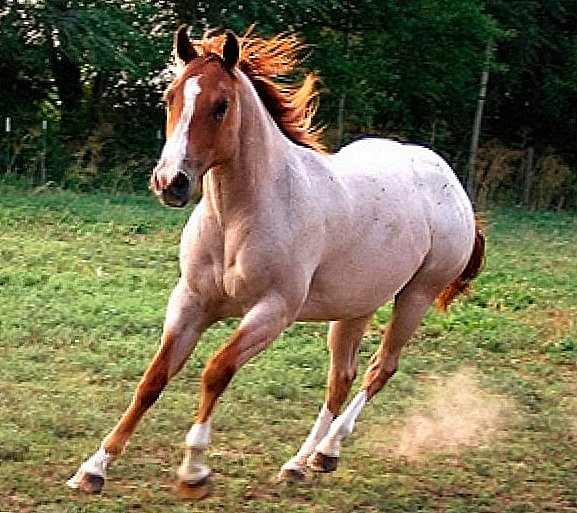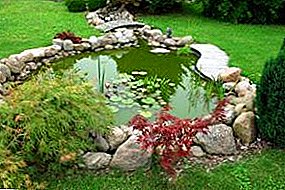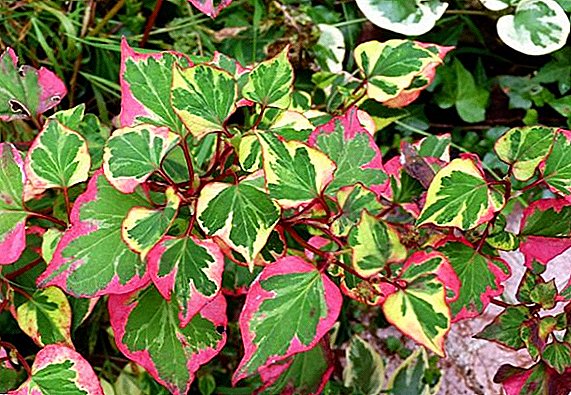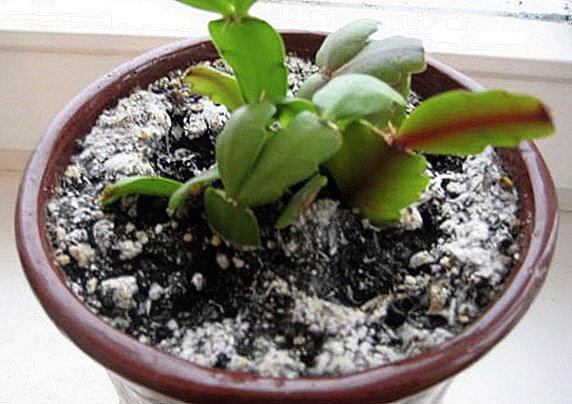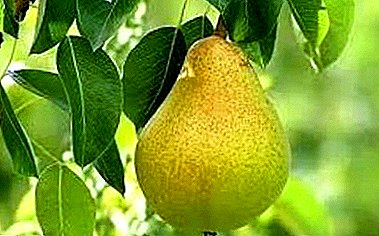
Pear - quite a popular culture and is widely grown in suburban areas and in gardens.
Among the many varieties, the most famous and favorite varieties stand out.
One of these varieties is pear Bere Bosk.
What kind of pears refers?
Bere Bosk belongs to the autumn mid-season variety, the fruits begin to ripen in mid-September. Sort not frost resistant, vigorous and thermophilic. Table view intended for fresh consumption.
Karataevskaya, Vernaya, Kupava, Forest Beauty and Muscovite also belong to the autumn varieties.
Breeding history and breeding region
 This is a long-standing French variety that still counts. from the end of the XVIII century. It was obtained by sowing an unknown type of seed in a place called Apremont is located in France.
This is a long-standing French variety that still counts. from the end of the XVIII century. It was obtained by sowing an unknown type of seed in a place called Apremont is located in France.
The grade received the name in honor of the specialist of a pomolog of Bosk. In addition to the official name, the variety is also called Bottle, Bere Alexander, Bere, Bere Apremont.
The variety is very widespread on the territory of Russia in the North Caucasus and in the Krasnodar Territory. Also popular in former CIS countries, such as Moldova, Belarus, Ukraine and others.
In Central Russia, Favorite Yakovlev, Cosmic, Autumn Yakovlev, In Memory of Yakovlev and Limonka feel well.
Bere Bosc variety description
Tree of this variety fast growing. With good care reaches high growth in a short period of time.
Crohn’s size is also irregular, needing regular pruning. Cranked branches do not differ in thickness and over time form a huge pyramidal crown.
The bark on the shoots is brown with a gray bloom. The shoots are of medium thickness with buds pressed on them. Chechevichek a lot and they are small in size.
The leaves have a dark green color, ovoid shape and a characteristic glossy sheen. The thickness of the leaf plates is average, the edges are smooth, solid, the tips are slightly elongated. Petioles not long, on average about 1 cm.
 The flowers are large, petals oval, somewhat oblong. In inflorescences from 10 to 20 flowers.
The flowers are large, petals oval, somewhat oblong. In inflorescences from 10 to 20 flowers.
The flowering of the tree occurs in the spring rather late, avoiding the threat of freezing.
This sort of fruit very large size, the average weight of which is 180 g, and the maximum weight can reach up to 250 g
The shape of the fruit varies from just oblong to bottle. And even the fruits of one tree can be visually distinguished.
Pear skin Bere Bosk is very thin, rough, at the onset of ripeness becomes "rusty" color. During storage, the fruit changes color to golden-bronze.
The stem is curved, long and sturdy. The funnel is almost invisible. Seeds are small, are in the bulb-shaped nest.
Specifications
The young tree begins to bear fruit at 6-8 after planting. It is propagated only by seed stock or with the help of seedlings of mainly cultivated varieties.
 A 17-18 year old tree brings harvest 80-100 c / ha, 30 year old tree - already up to 180 kg / ha.
A 17-18 year old tree brings harvest 80-100 c / ha, 30 year old tree - already up to 180 kg / ha.
High yields are demonstrated by such pear varieties: Oryol Beauty, Hera, Rogneda, Fairy Tale and In Memory of Zhegalov.
Full ripening occurs in mid-September from 5 to 15 numbers.
Fruits ripen unevenly, but can last for a long time without hanging down hanging on the branches even with strong wind.
ATTENTION: The main disadvantage of the variety is very low frost resistance.
The trees are in relative safety from frost only in the conditions of Krasnodar region or on the Black Sea coast. In other regions, subzero temperature is within 28-30 degrees can destroy a tree all the way to the roots.
Elena, Nika, Carmen, Fancy Efimova and Dessert Rossoshanskaya demonstrate good frost resistance.
According to these indicators, the Bere Bosc variety belongs to the most not winter-hardy varieties of pears. Also, a tree of this variety is observed poor drought tolerance. Transportability and storage of fruits are good.
But with a long stay in the refrigerator, the fruits lose their pleasant taste, the flesh of the tender becomes dry and brittle.
Pollination grade free. For a better result, the ovaries of the fruit on the site or, in extreme cases, in the nearby area you need to have pollinator varieties.
Are considered the best pollinators for this variety: Bere Napoleon, Williams, Bere Ardanpon, Bon Louise.
 The tree as a whole is unpretentious to the growing conditions and soil composition.
The tree as a whole is unpretentious to the growing conditions and soil composition.
It grows well and bears fruit on light sandy soils.
Juicy and sweet taste fruits estimated at 4.8 points on a five-point scale.
Pear has a very delicate creamy flesh with a pleasant melting texture.
Present almond notes and a characteristic fragrant smell.
REFERENCE: Variety Bere Bosk has repeatedly participated in breeding work and is the basis of many cultivated varieties. Of the 20 subsidiary varieties, 7 are zoned: Bergamot, Svarog, Tikhonovka, Verbena, Black Sea Amber.
The chemical composition of the fruit:
| Composition | amount |
|---|---|
| Sugar | 9,0% |
| Vitamin C | 4.6 mg / 100 g |
| Dry matter | 14,7% |
| Acids | 0,2% |
A photo






Planting and care
The best time for planting seedlings is autumn. If you wish, you can plant a young tree in the spring, but experienced gardeners prefer the autumn period.
Pear is a thermophilic plant and loves the sun. Therefore, the landing place should be well lit and be protected from the wind.
The soil should be sand and black earth. If there is none, then some black earth should be added to the pit during planting.
If the seedling is not the same or there are other fruit crops nearby, then you need to take into account the distance between adjacent trees, it should not be less than 5 meters.
 Pear Bere Bosk is a very tall tree and has a property grow strongly in height and width, therefore, she needs to provide sufficient space.
Pear Bere Bosk is a very tall tree and has a property grow strongly in height and width, therefore, she needs to provide sufficient space.
The landing pit is made about one meter. in diameter and 60-70 cm deep. But some experienced gardeners advise pit depths to do as well. not less than 1 meter.
Preparation of the pit should be carried out two weeks before planting.
ATTENTION: If the Bere Bosc pear planting does not occur in the fall or spring, the seedling must be with a large lump of soil from the previous place.
Black soil is laid at the bottom of the pit, and the selected soil is thoroughly mixed with organic fertilizers. Then in the pit is a mound of prepared soil and a seedling is placed on it.
The roots on the sides should be straightened. Next to the tree you need to drive a stake and tie it to the trunk. After all fall asleep and gently rammed.
A small bulk roller should be made around the tree to hold the water when watering and then slowly pour over two buckets of water. Spilled soil should be sprinkled with mulch.
REFERENCE: The main condition is abundant watering, as Bere Bosk does not tolerate drought.
 The care of the planted tree is carried out in good watering 4 times a month. Then the tree is watered three times a season, but abundantly.
The care of the planted tree is carried out in good watering 4 times a month. Then the tree is watered three times a season, but abundantly.
It is not necessary to use water from a well or a well for irrigation, it is better to use water from a barrel or garden container for this purpose.
It is necessary to fertilize a tree depending on the poverty of the soil. If there are thickets of nettle or burdock, the soil is quite fertile and practically does not need additional feeding.
In other cases fertilizer should be applied with watering three times a year. Typically, these fertilizers consist of urea, superphosphate, organics and potassium.
Bere Bosk is a type of pear with a wild growth, therefore pruning a tree should be given special attention.
A few rules will suffice:
- Pruning twice a year.
- Branches need to be done one length, too long to cut.
- Mandatory removal of young shoots, as parasites can live and winter there.
- The lower branches are not pruned.
It is necessary to work with sharp shears, at a right angle, and cover the places of trimming with garden putty.
Bye tree is short, for the winter you can cover it entirely.
 Cover the crown with brushwood and wrap the barrel with insulating material.
Cover the crown with brushwood and wrap the barrel with insulating material.
And when a snow cover appears, carefully fill the tree with snow, especially the tree trunk.
But later, when the tree grows to a few meters, it will be enough to insulate only the trunk.
Diseases and pests
For a tree to produce good fruit, it must be great. This variety is relatively resistant to scab and fungal diseases.
But, like other pear varieties are prone to infections such as manilioz, black cancer, rust, powdery mildew, cytosporosis.
Learn all about pear diseases: Bacterial burn, //selo.guru/ptitsa/bolezni-p/gribkovye/parsha.html, Rust.
The first measure of prevention against diseases will be a spring inspection of trees and the treatment of the trunk circle with a solution of urea and Bordeaux mixture.
The rest of the measures to combat infectious pathogens are as follows:
- Constant inspection of trees for damage or disease.
- Preventive spraying before budding, during flowering and during the pouring of the fruit.
- When a disease is detected, the timely destruction of damaged fruits, bark and leaves.
Pests that parasitize a pear are:
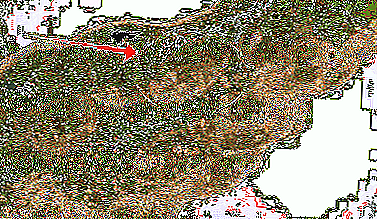 Hawthorn
Hawthorn- Shchitovka
- Fruit mite
- Medianitsa
- Weevil
- Sheet wrench
- Moth
The use of directional insecticides will save the tree from significant damage, but it is better to carry out preventive measures in advance.
The varieties Larinska, Perun, Duchesse, Lyra and Lel possess good disease resistance.
Foliage near a tree in autumn and winter serves as a hibernation site for most insects. A simple digging will break the pest insulation, and they will die from the winter frosts.
Some pests overwinter directly on the branches in cocoons. In the absence of foliage, they can be seen very well. Cocoons need to be manually collected and burned.
The bark also becomes a habitat for ticks and shield insects. If a add some fungicides to the lime whitewash in the fall, then the death of the parasites is assured.
Bere Bosk is a variety that, with simple and competent care, will surely please its owner with excellent fruits and a rich harvest of pears.
Watch a video on how to treat trees from pests.


 Hawthorn
Hawthorn